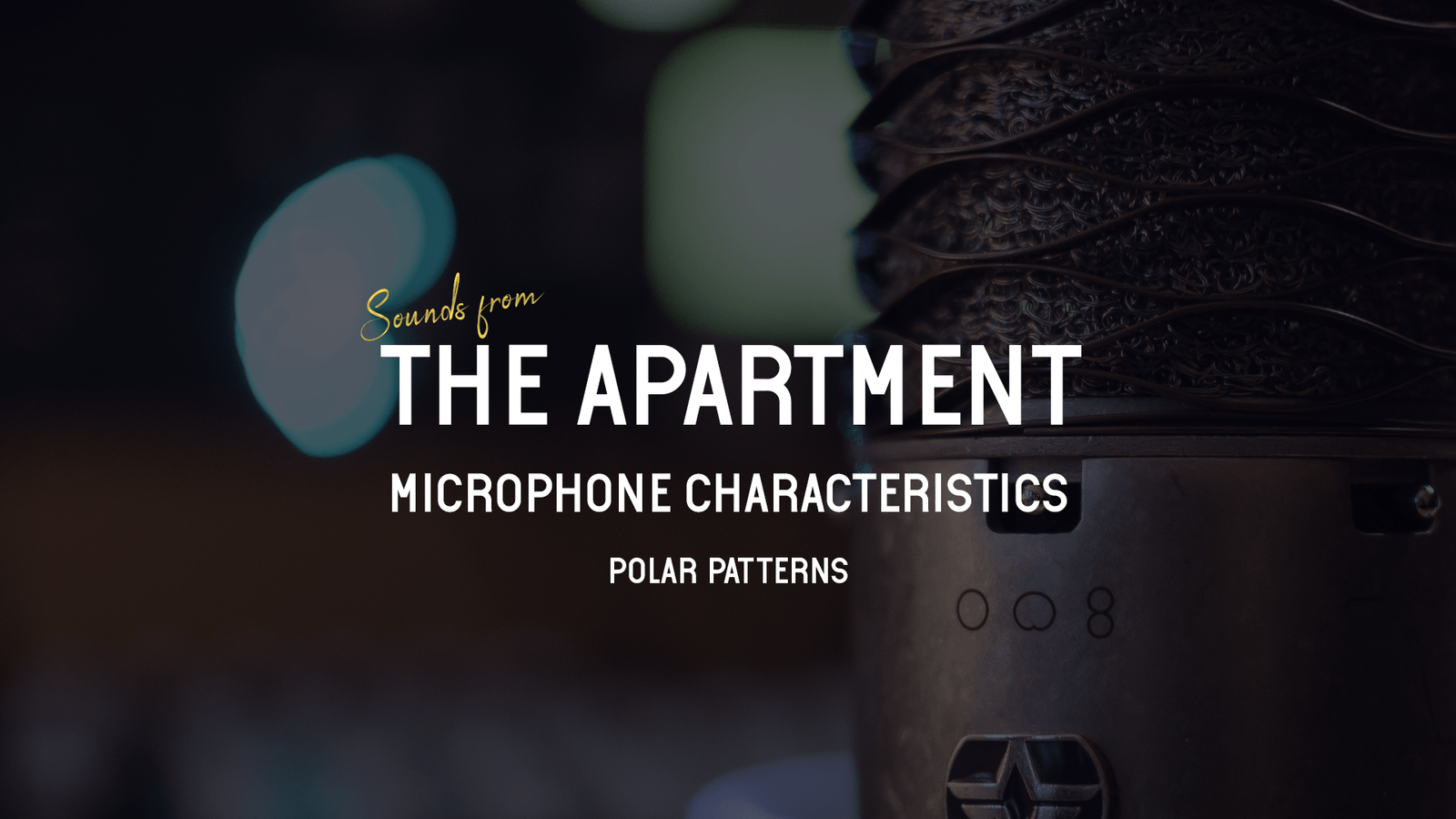Happy new year everyone!
A couple of weeks ago, back in 2019, we discussed about which microphone would be best for specific purposes and we mentioned some of their characteristics without explaining too much what they exactly mean. Now, if you researched in between then and now about these characteristics, good for you, because that was the reason these were dropped in that article with no or minimal explanation. It’s a good trait to research yourself rather than having everything there, ready for you. Make it a habit for 2020! Let’s start diving into microphone characteristics now!
Polar Pattern
Microphone polar patters define the directions from which a microphone is more sensitive to sound. There are a few Polar Patterns out there but we are going to discuss about the 5 most common ones.
- Omnidirectional
- Bidirectional or Figure of 8
- Cardioid
- Hypercardioid
- Supercardioid
To depict how the Polar Patterns work, we use a circular diagram that depicts the sensitivity of the microphone from each of its sides based on the Polar Pattern it uses.
If we were to depict this circular diagram being blank it would look like this:

The degrees are used to show us the directionality of the microphone, assuming that 0 degrees always points towards the audio source. The distance between the centre of the circle and its outer ring describes the sensitivity of the microphone to sound from any direction. Usually the centre of the circle refers to -30db and the outer ring to 0db.
Omnidirectional

Omnidirectional microphones are theoretically equally sensitive from whichever direction they receive sound. As you can see on the diagram to the right, the blue line that represents the pattern, is totally aligned to the diagrams circular limits and that represents that the sound received from any angle will be received as loud as the microphone allows, which is 0db.
Omnidirectional microphones do not demonstrate Proximity Effect (more on Proximity Effect later on) at all, however them being susceptible to sound from all directions, only allows for low gain before feedback and, essentially , this makes them almost unusable outside a studio’s controlled environment.
The upside to this, is that they tend to capture the sound as accurately as possible, and that is something we strive to achieve in a studio recording quite a frequently!
Bidirectional (or Figure of 8)

Bidirectional microphones are equally sensitive from their front and back and minimal to no sound can be captured by them from their sides at 90 and 270 degrees, as depicted on the diagram to the right.
Bidirectional microphones are usually Ribbon microphones (more on Ribbon microphones later on) and they can demonstrate Proximity effect extremely, especially if the sound source is quite close to the diaphragm.
All the bidirectional microphones are side-address microphones and they can never be top-address. If you ever see one, question it! Something is wrong there!
Cardioid

Cardioid is by far the most common microphone polar pattern. Cardioid microphones are as sensitive as possible at 0 degrees (their on-axis direction to the source), and not at all or minimally sensitive from their back at 180 degrees. They can still receive sound from their sides quite sensitively but the closer their angle is to 180 degrees, the less the sensitivity.
Due to this polar pattern, Cardioid mics are sensitive to one direction (unidirectional) making them ideal for live sound. They cannot receive sound from their back which allows for high gain before feedback. This design, however, makes them sensitive to Proximity Effect, but not as much as thw Bidirectional microphones are.
Hypercardioid

Hypercardioid microphones are a member of the Cardioid family, and they share lots of similarities with the Cardioid we discussed earlier, but also the Supercardioid microphones which are going to discuss next.
Hypercardioid microphones are extremely directional from their front at 0 degrees, there is a back lobe which allows sound to be captured from the back of them and they can receive no sound from their 110 and 250 degrees.
Due to their directionality, Hypercardioid microphones are ideal in film when sounds from nearby sources are totally unwanted.
Although their back can still capture sound, they can still be a good choice for live sound, although they won’t be able to reject as much sound as a Cardioid microphone.
Similarly to Cardioid, Hypercardioid are less sensitive on their sides, and actually, even less than Cardioids. Hypercardioid are also demonstrating strong Proximity Effect.
Supercardioid

Supercardioid microphones are located somewhere between a Cardioid and a Hypercardioid. They are more directional than Cardioid but less than a Hypercardioid. They have a back lobe at their back like the Hypercardioids, however, they are less sensitive there and they are rejecting any sound incoming from the 127 and 233 degree angles.
Like Hypercardioid microphones, Supercardioid are great candidates when it comes to film. Still, can be used in live sound although they can receive sound from their back, but less than Hypercardioids.
The way this polar pattern is shaped allows the microphone to have an equal sound rejection on all the sides apart from the on-axis at 0 degrees. 90, 180 and 270 degrees will have the same sensitivity which usually is down to -10db depending on the microphone design.
Supercardioids are also demonstrating Proximity Effect, more than Cardioid but less than Hypercardioid microphones.
Here you go then! An article that sums up the most common Polar Patterns for you. Have you ever used any one of them? If so which ones and on what microphone?
More microphone characteristics will come in future articles. Till then, take care!
Oh! And don’t forget you can find tips on how you can manage your home studio in a better way, right here!
Subscribe to our YouTube channel, Instagram and Facebook pages to get access to more of our content!

